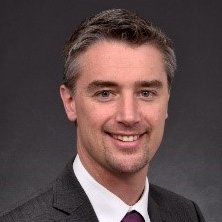Synergies in Urban Water Infrastructure Modeling
A special issue of Water (ISSN 2073-4441). This special issue belongs to the section "Urban Water Management".
Deadline for manuscript submissions: closed (31 March 2017) | Viewed by 49747
Special Issue Editors
Interests: urban drainage systems; stormwater management; nature based solutions; climate change adaptation; modelling
Special Issues, Collections and Topics in MDPI journals
Interests: resilience; modelling of urban water networks; complex network analysis; transition modelling; smart water city; data driven methods
Special Issues, Collections and Topics in MDPI journals
Special Issue Information
Dear Colleagues,
Models of urban water infrastructure systems are widely used in many scientific and practical engineering applications. They are used to design new or optimize existing systems, or to understand the connection between the natural and human environments. Traditionally, the field is divided into drainage and water supply, not only on a technical, but also at an institutional level.
While this segmentation into water supply and urban drainage might seem to be reasonable at first sight, for many applications these systems are technically linked or at least share the same space in the urban environment, and, as such, are influenced by the same drivers. To improve the integrated view of these two fields, in this Special Issue we would like to especially invite research on integrated studies, in which different systems interact with each other, or in which synergies are used to model both systems. Additionally, manuscripts on the benefits of overarching methods and tools are specifically invited. Examples are common external drivers (as for example urban development, growing or shrinking population, climate change) uptake of new technology which also influences the other system (e.g., water saving measures, reuse scenarios), the contamination of one system through the other (e.g., sulfate, micro pollutants), or shared methods and tools (e.g., for data collection and handling, model building, calibration, uncertainty analysis, system analysis, risk assessment, resilience).
Prof. Dr. Manfred Kleidorfer
Prof. Dr. Robert Sitzenfrei
Guest Editors
Manuscript Submission Information
Manuscripts should be submitted online at www.mdpi.com by registering and logging in to this website. Once you are registered, click here to go to the submission form. Manuscripts can be submitted until the deadline. All submissions that pass pre-check are peer-reviewed. Accepted papers will be published continuously in the journal (as soon as accepted) and will be listed together on the special issue website. Research articles, review articles as well as short communications are invited. For planned papers, a title and short abstract (about 100 words) can be sent to the Editorial Office for announcement on this website.
Submitted manuscripts should not have been published previously, nor be under consideration for publication elsewhere (except conference proceedings papers). All manuscripts are thoroughly refereed through a single-blind peer-review process. A guide for authors and other relevant information for submission of manuscripts is available on the Instructions for Authors page. Water is an international peer-reviewed open access semimonthly journal published by MDPI.
Please visit the Instructions for Authors page before submitting a manuscript. The Article Processing Charge (APC) for publication in this open access journal is 2600 CHF (Swiss Francs). Submitted papers should be well formatted and use good English. Authors may use MDPI's English editing service prior to publication or during author revisions.
Keywords
- water supply,
- drainage,
- sanitary engineering,
- calibration,
- systems analysis,
- data management,
- integrated modelling,






